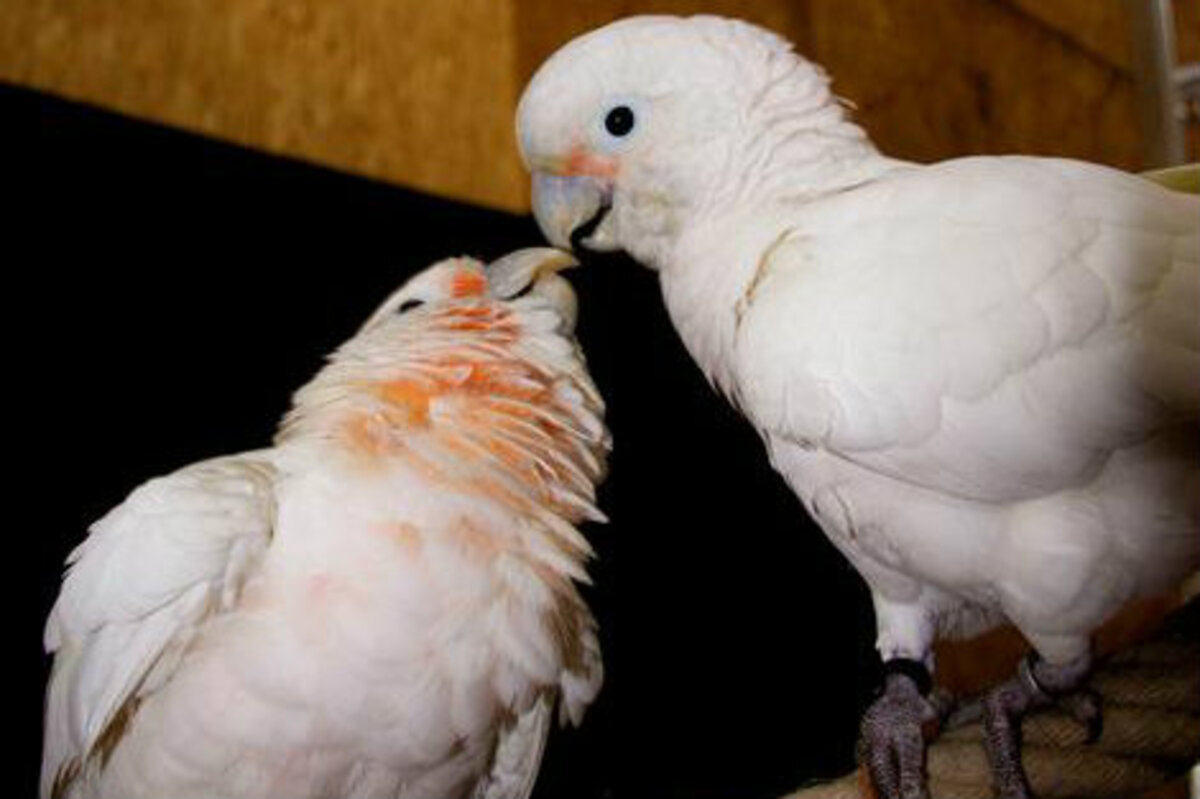Da Vinci-code, bird-style: Cockatoos can solve complex puzzles
Loading...
These are birds with intellects to rival even those of Alfred Hitchock.
Researchers have found that Goffin's cockatoos can complete a complicated sequence of tasks in pursuit of a reward, suggesting that species' cognitive ability to innovate solutions to an unfamiliar problem.
In the experiment, ten untrained cockatoos were presented with a complex device that, if a series of steps were completed, would proffer up a quarter of a cashew: first, the birds must remove a pin, then a screw, then a bolt; then turn a wheel 90 degrees and then a latch sideways. It took one of the birds, Pipin, less than two hours to finish the process unassisted in five different sessions. Other birds finished the puzzle with some help, after being offered either the series of locks incrementally or after watching a bird partner do the task.
"The cockatoos sudden improvement in removing the five locks, each of which required a different set of behaviors indicates pronounced levels of behavioral plasticity,sensorimotor control and practical memory in this species," said Alice Auersperg, who led the study at the Goffin Laboratory at Vienna University, in an email interview.
Except for work with chimpanzees, a nonhuman animal successfully completing more than three, completely novel, sequential steps without prior training has in scientific literature. Most similar studies test the animal’s ability to learn through reinforcement a set of behaviors. But this study was more interested in the cockatoo’s capacity to innovate: Could this Indonesian bird develop solutions to a problem not present in its natural environment? Did it understand the logic of working toward a series of tasks sequentially?
“Our aim was to investigate, to explore the mechanism of learning, and to advance towards identifying what it is that animals learn when they master a complex new sequential task,” write the scientists in the paper, published in PLOS ONE.
To complete the puzzle, the birds had to understand the . Because there was only one reward at the end of the puzzle, that means that the birds had to complete the first four steps with only the promise of another step. And to test whether or not the birds both understood the underlying problem of the sequential tasks and had to innovate in each round, rather than simply having learned through reinforcement how to undo each lock, the scientists reordered the locks, removed a step, or changed the locks’ functionality in each of the five sessions.
In addition to appearing to understand the general concept of sequential task doing, the birds also seemed to demonstrate what is known as the “cognitive ratchet” process: once the birds learned to solve one lock, they seldom struggled with future locks of the same type.
"As our subjects also reacted sensibly as well as flexibly to sudden chances in the sequence and omitted most irrelevant parts we assume that they also formed some inference about the effect the locks have on one another; the depth of their understanding of the problem is however still debatable," said Dr. Auersperg.
Goffin's cockatoos - small and white - are a uniquely curious and , eager to explore their world with their tongues, beaks, and claws, and the scientists say that that the birds' intrepidness and fascination with their surroundings was a critical factor in their success.





